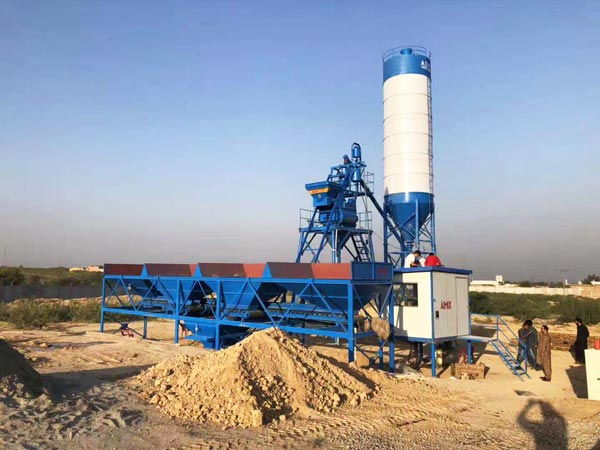If you are thinking about purchasing a batching plant, you should have a clear idea about the main parts that make up this type of machine. These components include the Concrete mixer, Aggregate silos, and Adjuvant tanks. In addition, a control panel is an integral part of the plant.
Aggregate Silos
Aggregate silos are one of the key elements of a ready mix concrete plant for sale. They are used to store aggregates for use in concrete. Typically, there are two or more compartments in the silo. The silo will have a weighing belt or hopper and can be customized for different types of aggregate. They also have an optional vibrating machine that will remove aggregate from the silo.

Aggregate silos store ingredients for concrete and come in a variety of sizes and configurations. Some silos are portable, while others require a foundation. Some are connected to conveyors or gravity to transport materials to the concrete plant. A good way to get the right size silo for your needs is to find a manufacturer that builds silos that are designed for your exact specifications.
Aggregate silos are a vital part of a batching plant, and they can store a large amount of cement. They help maintain the optimum capacity of the batching plant by keeping the cement at the proper temperature. Oftentimes, silos are coupled with a batcher to reduce manual intervention. This reduces errors and saves manpower. Furthermore, fewer manual interventions mean fewer reworks and accidents.
Concrete Mixer
A concrete mixer is an important element of a mini batching plant Indonesia. It is responsible for mixing all the necessary ingredients and then forming concrete. It is a mechanical device that consists of a large number of different elements. Each one of these elements has a specific purpose. These elements can be either single-shaft or double-shaft.

This element is necessary for manufacturing custom concrete in large volumes. It is an integral part of a portable concrete batching plant for sale and must comply with the applicable regulations. It uses advanced automation to ensure continuous production and adjust the water content of the aggregates. This ensures that workers are not exposed to high levels of silica and cement dust, which can be harmful to health.
The mixer has a control panel that shows the operations interface. Once the mixing process is completed, a conveyor belt will load the concrete into a mixer truck. The mixer truck will then discharge the concrete onto the concrete mat.
Adjuvant Tanks
Adjuvants are a key part of the application process. Their function is to increase the efficiency of the chemical spray solution. Adjuvants are typically nonionic surfactants. They decrease surface tension and may have penetrating properties. This property can increase the spread of droplets. However, their use is not recommended for all active ingredients.
In organic farming, polymers are common types of adjuvants. They are usually derived from pinene, the aromatic terpene that contributes to pine tree fragrances. These polymers can be added to the spray solution to serve various functions. They can also form a film after drying, which helps protect the active ingredients and prevent washing or volatilization.
Control Panel
The control panel of a batching plant beton is a vital component for the production of quality concrete. It helps to make fast, accurate measurements of mix material ingredients. Modern machines even allow you to print or save your mix material recipes for easy access. The control panel is crucial because it helps you control all the elements of a batching plant.
The main components of the control panel are the input and output channels. These are connected through a digital signal to drive a batching plant’s various processes. The panel body is made of CRC sheet and is designed for fully automatic or manual operation. In addition, it is user-friendly and includes graphical and numeric readouts.
In the tower, three critical units are located. The first one is the aggregate feeder. Here, the aggregates are measured and transferred to the mixing unit. The next two units are the cement and additive hoppers and the twin shaft mixer. These elements work together to produce the finished product.
